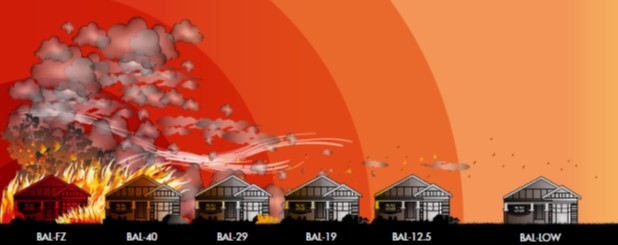Climate change and land-use change are projected to make bushfire events more frequent and intense. This reinforces how critical it is to work to recognized standards such as AS 3959:2018 when planning construction in bushfire prone areas.
Why Remain Compliant in Bushfire-Prone Areas?
The frequency of bushfires has risen in previous years; this trend is set to continue increasing by up to 14% by 2030, 30% by the end of 2050 and almost 50% by the end of this century, according to a recently released report from the UN Environment Programmer (UNEP) and GRID-Arundel.
How Can You Remain Compliant in Bushfire-Prone Areas?
Simulated bushfire testing is used to evaluate the performance of external elements of construction for buildings exposed to radiant heat and flaming sources. The test specimens must be full-scale samples of materials or representative components that may be exposed to varying irradiance levels from a bushfire front. Simulated bushfire testing is a systems-based test centred around the behaviour and interaction one construction element may have on another. For example, a burning deck interacting with an adjacent external wall. Warringtonfire’s capability for bushfire testing includes:
External walls
Roof systems
Skylights
Vertical glazed elements
Doors
Decks
Construction in Bushfire Prone Areas - AS 3959:2018, AS 1530.8.1:2018 and AS 1530.8.2:2018
Construction of buildings in bushfire-prone areas is explicitly specified in AS 3959:2018 and referenced in the National Construction Code (NCC).
AS 3959:2018 outlines the procedures that local councils use to determine Bush-fire Attack Levels (BALs) and is based on the surrounding vegetation and terrain.
AS 3959:2018 further outlines the deemed to satisfy provisions for each BAL to meet the minimum requirements of the NCC or the need for simulated bushfire testing per AS 1530.8.1:2018 and AS 1530.8.2:2018 in order to gain compliance.
AS 3959 does not have a Deemed to Satisfy (DtS) solution for BALFZ where the building set back to the vegetation is less than 10 m. In this case, you must test per AS1530.8.2.
AS 3959 has two BAL FZ situations.
Setback to the vegetation >10m - there is a DtS solution for BAL FZ in AS 3959.
Setback to vegetation <10m - there is no DtS solution for BAL FZ in AS3959 in which case AS 3959 states that you must test to AS 1530.8.2:2018.

Bushfire Testing - The Process
AS 1530.8.1:2018
AS 1530.8.1:2018 details the method for testing elements of construction for buildings exposed to simulated bushfire attack – radiant heat and small flaming sources. Specimens will be assessed for performance against one of these levels of exposure - BAL 12.5, BAL 19, BAL 29 or BAL 40.
Test specimens will be subjected to an irradiate profile simulating exposure to radiant heat from a bushfire front, with additional exposure to direct flame impingement from small secondary fires simulating burning debris.
AS 1530.8.2:2018
AS 1530.8.2:2018 details the test method for tests on elements of construction for buildings exposed to simulated bushfire attack – large flaming sources. The objective is to classify the performance of elements required to resist exposure to direct flame impingement from the fire front and large secondary fires. This standard is specific for a bushfire attack level of flame zone (BAL FZ).
AS 1530.8.1:2018 vs AS1530.8.2:2018
AS 1530.8.1 exposes specimens to radiant heat, whereas testing to AS 1530.8.2 exposes the sample to the furnace conditions as described in AS 1530.4 for 30 minutes and is intended for elements of construction that would likely be in the direct path of a bushfire front.
For more information on bushfire testing
Tel: +86 25 86583475 +86 25 86583465
Website: www.fire-test.com www.firete.com
Mail: info@hksmartps.com
wechat: firetesting or 17714189018
...
|
